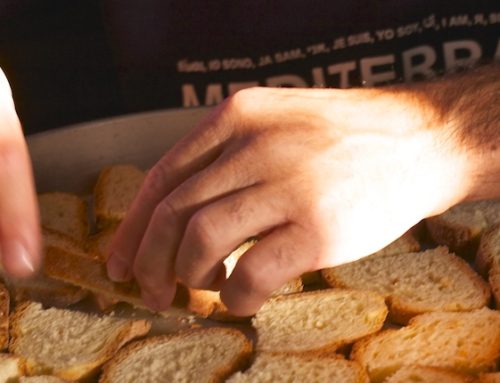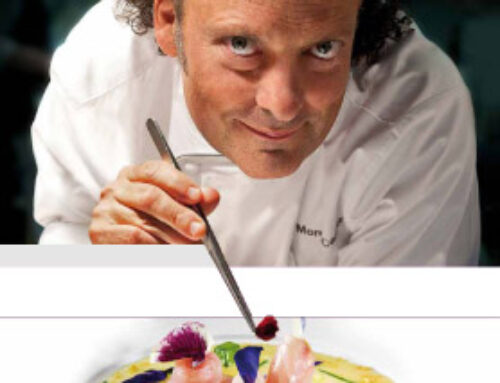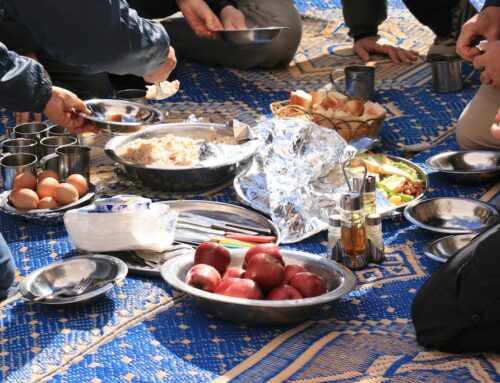We want to discuss flavours, taste, contamination, differences and similarities in the large and fascinating melting pot of the Mediterranean cuisine, and chef Musa Dagdeviren doesn’t wait to be asked twice. “Turkey is not a uniform nation from a gastronomical point of view Tangible signs have remained here from when dozens of ethnics groups, influences, substances and aromas have passed through and lived here. That is why our cuisine is such a rich one.”
(…) and prepares the Mualle (which reads muallé) for us, a dish made with beans and vegetables which comes from Antioch. And one that is rather particular: it is cooked by building a sort of castle in layers, to ensure a uniform and gradual exchange between the different ingredients. Chef Dagdeviren chops yellow onion, garlic, long and narrow green chilli peppers (which are sweet), and cherry tomatoes, which are quite big, into fairly large pieces. He flambés them by adding apparently large doses of sommaco[1], red chilli pepper, dried mint, black pepper, cumin, a pomegranate based sauce, olive oil which is similar to our oil from Liguria and a ladle of very liquid tomato sauce, cooked separately. He then tests if there enough salt, adding two extra very large pinches. After allowing the ingredients to cook but not brown, for about ten minutes, he takes a stainless steel pot and builds the castle consisting of four alternating layers: the first layer consists of a part of the vegetables; the second is a two centimetres layer of raw eggplant from which he peels off the skin in strips (leaving half of the skin on); the third layer consists of big green half-cooked lentil; and the fourth is a thick layer of parsley and twigs of fresh unchopped mint. After forming the first four layers, he starts again from the first, and does so for another five times to fill the pot. Finally, he presses the layers with the palm of his hand, squeezing them down firmly, without upsetting the different layers. He turns up the heat, and places a plate facing down on the top layer and then a pot filled with water on the top, to keep the structure under a moderate pressure. You cook this – he explains to us – at a lively heat for about ten minutes, then you turn down the heat (he actually moves the pot from the gas cooker to a charcoal fire which is half covered with ashes) and let it cook. “Turkish cuisine is slow, always!”. And in fact we wait for at least an hour before the Mualle is ready.






Leave A Comment